Laboratory tests show anaemia, increased LDH and bilirubin, decreased haptoglobin and higher white blood cell counts in post-transfusion haemolytic reactions. Copyright 2023 by American Society of Hematology, Prevention and management of HA due to blood group incompatibility, Thrombotic microangiopathic HA after HSCT, Other HAs after allogeneic stem cell transplantation, https://doi.org/10.1182/asheducation-2015.1.378. This can be prevented through plasma volume reduction of the product.17, Passenger lymphocyte syndrome (PLS) is a significant and unpredictable complication after minor ABO-incompatible HSCT.18 It usually occurs 1-3 weeks after HSCT and is due to hemolysis of recipient's RBCs through isohemagglutinins produced by donor-derived immunocompetent lymphocytes. Unfortunately, despite many studies, it has not been possible to determine the critical titre of anti-A and/or anti-B antibodies that would be safe in the event of transfusion of ABO incompatible platelet concentrates, and in many countries, proprietary haemolysis prevention programs have been developed for recipients of incompatible platelets [48, 49, 50, 53]. Differential diagnosis of delayed haemolytic transfusion reactions includes latent sources of infection, autoimmune haemolytic anaemia, cold agglutinin disease, nocturnal paroxysmal haemoglobinuria, bleeding, mechanical destruction of red blood cells, for example, artificial heart valves and TTP. found that, using current laboratory methods, 25% of red blood cell antibodies become indeterminate on average after about 10months from production [43]. trailer ABO-incompatible platelet transfusions can cause hemolysis, in particular, platelet concentrates from donors with high isohemagglutinin titers. However, the complement system does not work specifically. However, many studies show discrepant results regarding transplant outcomes and it is most likely that ABO blood-group incompatibility is not important for transplant outcome.7,8, Hemolytic complications due to ABO incompatibility. Additional fluid and diuretic therapy are usually not necessary. Sometimes, isohemagglutinins against recipient ABO blood group antigens can be detected. Evidence for treatment of post-transplant AIHA is lacking and available data arise from single case reports or case series. We have maintained this order throughout the review, the tables, and the graphical representation. However, the propensity to form a new anti-RBC antibody may reflect an underlying pro-inflammatory comorbid state that itself may be influencing LOS. Finally, disease relapse needs to be considered and ruled out. WebA hemolytic transfusion reaction is a serious complication that can occur after a blood transfusion. In this condition, your immune system makes antibodies (proteins) that attack your red blood cells. Proinflammatory cytokines affect blood coagulation and fibrinolysis, for example, TNF- and IL-1 increase TF expression and inhibit thrombomodulin (TM) expression on vascular endothelial cells [28]. AB plasma is the universal donor source. CLL indicates chronic lymphocytic leukemia; CVID, common variable immunodeficiency syndrome; G6PD, glucose-6-phosphate dehydrogenase; GVHD, graft-versus-host disease; PNH, paroxysmal nocturnal hemoglobinuria; and SAA, severe aplastic anemia. Post-transplant AIHA is often therapy resistant and associated with decreased survival. Steroids should be administered at a dosage of 1-2 mg/kg. The C1qrs complex is created and activates the C2 and C4 components and their distribution into C2a and C2b as well as C4a and C4b. HA in association with the underlying disease and infection-associated HA are beyond the scope of this review and will not be further discussed. CXCL8 concentration is similar to that in intravascular haemolysis, whereas TNF- is synthesised at low concentration, estimated at <100pg/ml [1, 2]. During the haemolytic reaction, C3a, C4a, C5a and C5a-des-arg anaphylatoxins are released. DHTR can be identified in these patients by the presence of antigen on the transfused red blood cells to which the antibodies may be directed. Anemia, reticulocytopenia, and a bone marrow lacking erythroid precursors are clues for the diagnosis of PRCA in the setting of major ABO-incompatible HSCT. /Creator (Apache FOP Version 1.0) Spath etal. Hemolysis during and after HSCT can occur at different time points, ie, even weeks or months after transplantation, and may have several causes (Figure 1). They include acute haemolytic, febrile non-haemolytic, allergic (with or without anaphylaxis), and transfusion-related acute lung injury (TRALI). NO can bind to thiol groups and haemoglobin haeme [35]. The type of laboratory tests performed for early transfusion haemolytic reactions is shown in Table 7. Red blood cells can be absorbed and completely digested inside the macrophage. Acute reactions occur within 24 hours of transfusion and include acute haemolytic, febrile non-haemolytic, allergic, and transfusion-related acute lung injury (TRALI). % In differential diagnosis, attention should also be paid to non-immune reasons related to improper blood storage, transfusion of red blood cells through a small needle diameter, etc. FNHTR manifests as fever and/or chills without Clinically, this is manifested by unexpected bleeding and/or a decrease in blood pressure. Bilirubin concentration depends on the severity of haemolysis and liver function. In addition, hypertension and proteinuria can be the early signs of TA-TMA, although these manifestations are encountered frequently in patients after HSCT.26,27,34,35 Soluble membrane attack complex (sC5b-9) may be elevated and is associated with a poor prognosis.30 Diagnosis can be confirmed by renal biopsy, which shows typical histologic findings, although there is little correlation between clinical and pathologic diagnosis. Laboratory tests that help to differentiate haemolysis include determination of free haemoglobin in the blood and urine, haptoglobin and lactate dehydrogenase (LDH) and bilirubin. A comparison was also made against all inpatient TRs not due to RBC antibodies (non-anti-RBC TRs). In addition, tumour necrosis factor (TNF) and interleukin-1 (IL-1), released by phagocytes during haemolytic transfusion reaction may also contribute to hypotension and shock [32]. IVIG formulations with low isohemagglutinin titers and/or adjustment of dosage can prevent IVIG-induced HA, especially for patients with blood group A. TMA describes a syndrome characterized by microangiopathic HA, thrombocytopenia due to platelet consumption, and microvascular thrombosis (Table 4).25 The formation of platelet-rich thrombi induces mechanical RBC damage and thus intravascular hemolysis. Antibodies of the IgM and IgG class (outside the IgG4 subclass) bind the C1q protein in the initial stage of activation. This phenomenon occurs in patients with sickle cell disease [44, 45, 46]. <<488cdda8e0677b47a7accfabb5999f1d>]>> A characteristic feature of the cell membrane of these blood cells is the lack or weak expression of the CD55 (DAF) and CD 59 (MIRL) proteins, which are complement inhibitors. Although infrequent, non-immune transfusion reactions, including haemolysis, transfusion-associated sepsis, and circulatory overload, should be considered in the differential diagnosis. Point algorithm for the diagnosis of acute disseminated coagulation Intravascular [29, 30, 31]. In the pathogenesis of DIC, interactions between the blood coagulation system and mediators of the inflammatory response are also of great importance [27]. This chapter is distributed under the terms of the Creative Commons Attribution 3.0 License, which permits unrestricted use, distribution, and reproduction in any medium, provided the original work is properly cited. Additionally, each center should define policies and standard operating procedures for the prevention and management of complications after ABO-incompatible HSCT (Table 3).19 Definite ABO blood group assignment should be done after a transfusion-independent interval, full engraftment, remission of the underlying disease, and in close collaboration with the treating physicians. Alloantibodies responsible for haemolysis, needle diameter too small, haematocrit of transfused red blood cells too high, an inappropriate method of freezing/thawing red blood cells, mechanical damage to blood cells, artificial valves, Drug-induced haemolysis of red blood cells. Antibodies destroying transfused blood cells are called clinically relevant antibodies that are active invitro at 37C. Patients with antibodies found to be clinically insignificant may theoretically be given a blood transfusion from a donor with the antigen to which they are directed. The increase in cytokine release may also be due to the interaction of Fc R1 receptors with IgG molecules associated with red blood cells. The study showed that DAT could only indicate 10% of antibody coated cells [61]. Hypotension occurs in about 1in 10 cases of intravascular haemolytic transfusion reaction, but is also sometimes observed in extravascular haemolysis. Most of the cells coated by the complement C3b component are destroyed by liver macrophages, that is, by Kupffer cells, while the cells coated with antibody molecules are mainly destroyed by spleen macrophages. Complement activation appears to be the most important determining factor in these cases. This makes the subject more susceptible to haemolysis. Search for other works by this author on: 2016 by The American Society of Hematology. Matthew Yan, Christine Cserti-Gazdewich; Inpatient Non-Hemolytic Delayed Serologic Transfusion Reactions and Hospital Length of Stay: Is There an Association?. However, the symptoms in some recipients, or the occurrence of a reaction already during a blood transfusion and haemoglobinuria, indicate that the destruction of blood cells also takes place inside the vessel. In contrast, the presence of antigens from the Rh, Kell, Kidd and Duffy systems on the surface of red blood cells is determined in the range of 103104 per cell [12]. In some patient groups, it may be difficult to recognise a delayed haemolytic transfusion reaction. Antibodies capable of destroying transfused blood cells are called clinically relevant antibodies, and the transfusion reaction in the event of immunological incompatibility depends on: (1) specificity of antibodies; (2) thermal amplitude of the antibodies; (3) IgG classes and IgG subclasses; (4) number, density and spatial configuration of antigenic sites on red blood cells; (5) the ability of antibodies to activate the complement system; (6) plasma concentrations of antibodies and (7) volumes of transfused red blood cells. Copyright 2023 American Society of Anesthesiologists. The mechanism of appearance of intravascular symptoms has not been fully explained, because although some of the antibodies bind complement components, their reactions end with C3 components. Another cause for haemolytic transfusion reaction may be a secondary immune response in patients who have developed alloantibodies during previous transfusions of blood components or pregnancy. Hemolytic disease of the fetus and newborn is an alloimmune hemolysis caused by maternal antibodies in the neonate's plasma, is most commonly anti-Rh, and The C5B-C9 complex called membrane attack complex (MAC) creates pores in the cell membrane of a red blood cell that are 1/700 of its size. We are a community of more than 103,000 authors and editors from 3,291 institutions spanning 160 countries, including Nobel Prize winners and some of the worlds most-cited researchers. Table 5 presents features of delayed haemolytic transfusion reaction and the time of their occurrence. Interesting clinical point of view are antibodies from the Kidd system. ATG indicates anti-thymocyte globulin; DLI, donor-lymphocyte infusion; EPO, erythropoietin; PLS, passenger lymphocyte syndrome; RBC, red blood cell; and TPE, plasma exchange. The nature of the reaction may not be immediately apparent, Acute hemolysis may also rarely occur after minor ABO-incompatible HSCT through transfer of high-titer donor isohemagglutinins contained in the graft or in recipients with small blood volume (pediatric patients). Low doses of dopamine (15g/kg/min) may be used to maintain renal circulation, but this may not be effective. How do I approach ABO-incompatible hematopoietic progenitor cell transplantation? A bidirectional blood-group barrier is a combination of major and minor ABO incompatibilities. They are mediated by the interaction of recipient antibodies to foreign antigens contained in any allogeneic blood products. The interaction between Hb and NO is regulated by the allosteric transition of haemoglobin R (oxyHb) to the T form (deoxyHb). Outcomes included length of stay (LOS), interval between TR recognition and discharge, severity of TR (as per the International Society of Blood Transfusion grading system), and death. The evaluation of haptoglobin and free hemoglobin in serum and urine can be helpful. In approximately 50% of cases, alloantibodies produced after transfusion or pregnancy cease to be detected after a few months, and this period of time depends on the specificity of the antibodies and the individual characteristics of the immune system. WebPeople with two Jk (a) antigens, for instance, may form antibodies against donated blood containing two Jk (b) antigens (and thus no Jk (a) antigens). Hematopoietic stem cell transplantation (HSCT) is a potentially curative and increasingly used treatment approach for different malignant and nonmalignant diseases, including entities associated with HA, such as chronic lymphocytic leukemia with autoimmune HA (AIHA), paroxysmal nocturnal hemoglobinuria, and sickle cell disease.1 HA can develop after HSCT; however, HSCT can still be considered for the treatment of severe, therapy-resistant AIHA. Donors are screened for alloantibodies. Basic Science and Clinical Practice in Blood Transfusion: Poster II, https://doi.org/10.1182/blood.V128.22.2633.2633, transfusion associated circulatory overload. All-antibody screening for recipients is generally performed using routine testing on standard blood cells. Such a blood cell, after being released from the macrophage, circulates in the blood as a spherocyte, whose survival is short. Haemolytic transfusion reactions due to passively transferred anti-A and/or anti-B antibodies have also been observed in patients after intravenous immunoglobulin administration [54]. A retrospective review of a transfusion reaction database was undertaken at a large academic hospital in Toronto, Canada. HWr6}WiL i A2$Tfk+'Ly8#J&E,U[.5O}@JYjE"t,VbptZ[1z/I8~:{;y2F"@i"DGA,?Th)BZ(E. WebFebrile non-hemolytic transfusion reaction (FNHTR): This is defined as an acute increase in body temperature >1C within 4 hours of the end of a transfusion and a temperature of >39C or 102.5F that cannot be explained by other
Psychological Imprisonment In The Tempest,
Brunswick School Board Of Trustees,
Guatemalan Actors In Hollywood,
Janno Gibbs And Bing Loyzaga Daughter,
Articles H

















